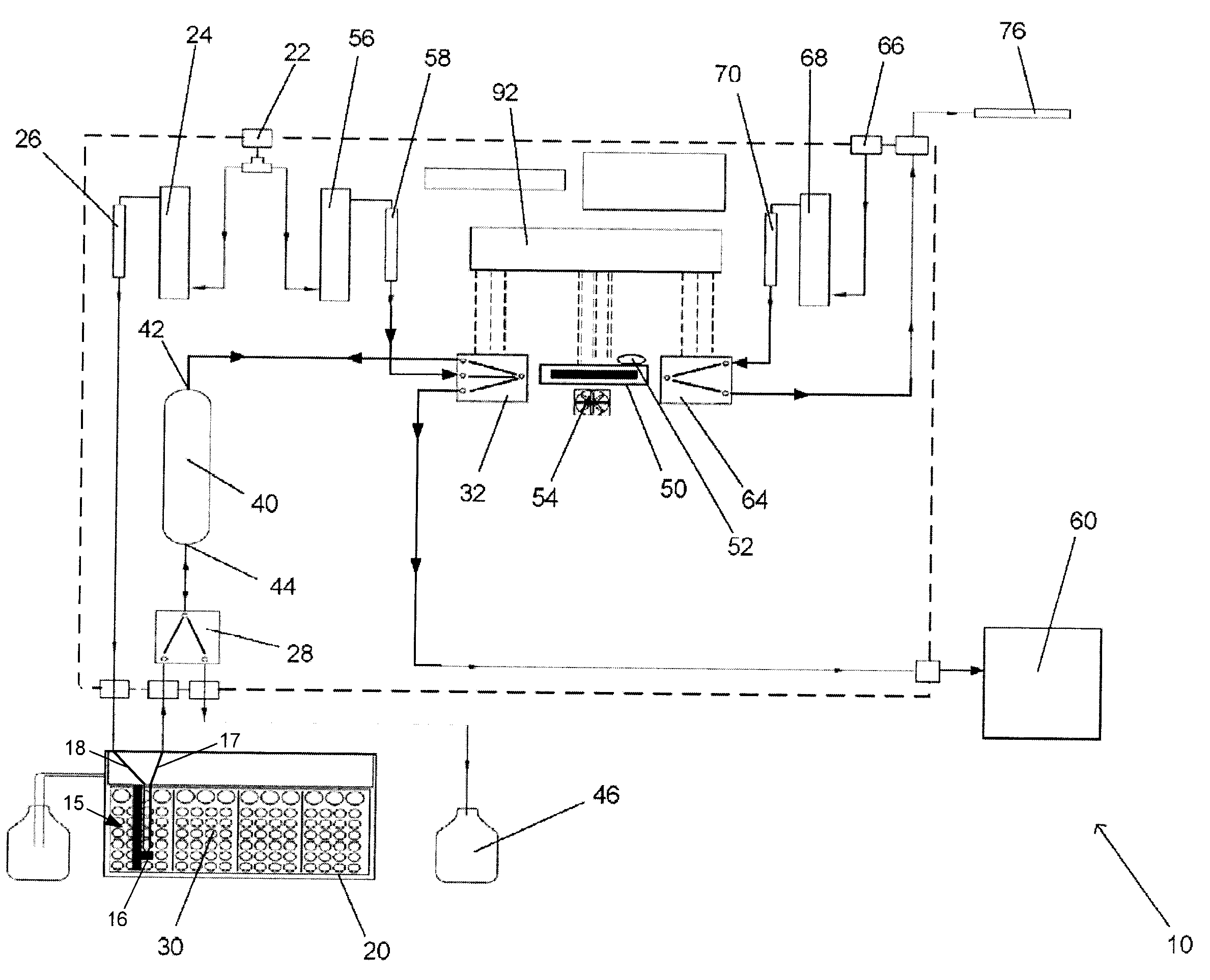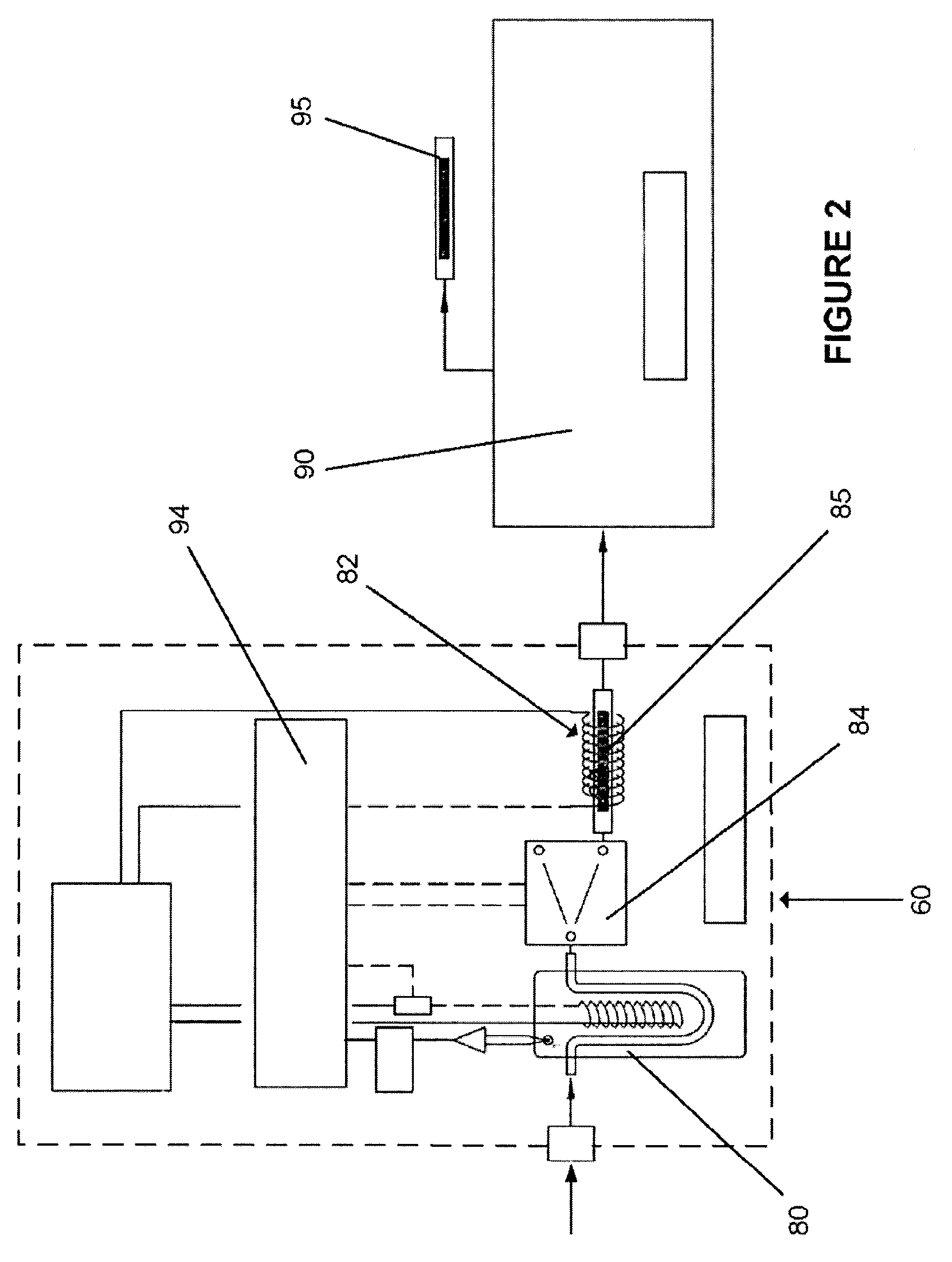Automated system for detection of chemical compounds
a chemical compound and automatic technology, applied in the direction of liquid degasification, separation processes, instruments, etc., can solve the problems of high labor intensity, high labor intensity, and high labor intensity of operators, so as to reduce the amount of operation labor and improve the degree of uniformity of the procedur
- Summary
- Abstract
- Description
- Claims
- Application Information
AI Technical Summary
Benefits of technology
Problems solved by technology
Method used
Image
Examples
Embodiment Construction
[0042]FIG. 1 shows an embodiment of the disclosed automated system 10 for processing and / or detecting low levels of organomercury compounds, including, but not limited, to methyl mercury. In the embodiment, shown in FIG. 1, automated system 10 comprises a holder 20 for carrying a plurality of sample containers 30, a gas and liquid separator, or purge vessel, 40, a trapping vessel 50, and a gas chromatography (GC) system 60. The sample containers 30, purge vessel 40, trapping vessel 50, gas chromatography (GC) system 60, and other components of the automated system 10 are in fluid communication with one another by way of a plurality of tubular members. As used herein, the term “fluid communication” refers to liquid communication and / or gaseous communication. Tubular members may be formed from, but are not limited to, a fluoropolymer, such as Teflon® tubing.
[0043]Sample container 30 may be, but is not limited to, a sealable autosampler vial. In this embodiment, to prepare a test solut...
PUM
| Property | Measurement | Unit |
|---|---|---|
| temperature | aaaaa | aaaaa |
| length | aaaaa | aaaaa |
| length | aaaaa | aaaaa |
Abstract
Description
Claims
Application Information
 Login to View More
Login to View More - R&D
- Intellectual Property
- Life Sciences
- Materials
- Tech Scout
- Unparalleled Data Quality
- Higher Quality Content
- 60% Fewer Hallucinations
Browse by: Latest US Patents, China's latest patents, Technical Efficacy Thesaurus, Application Domain, Technology Topic, Popular Technical Reports.
© 2025 PatSnap. All rights reserved.Legal|Privacy policy|Modern Slavery Act Transparency Statement|Sitemap|About US| Contact US: help@patsnap.com



